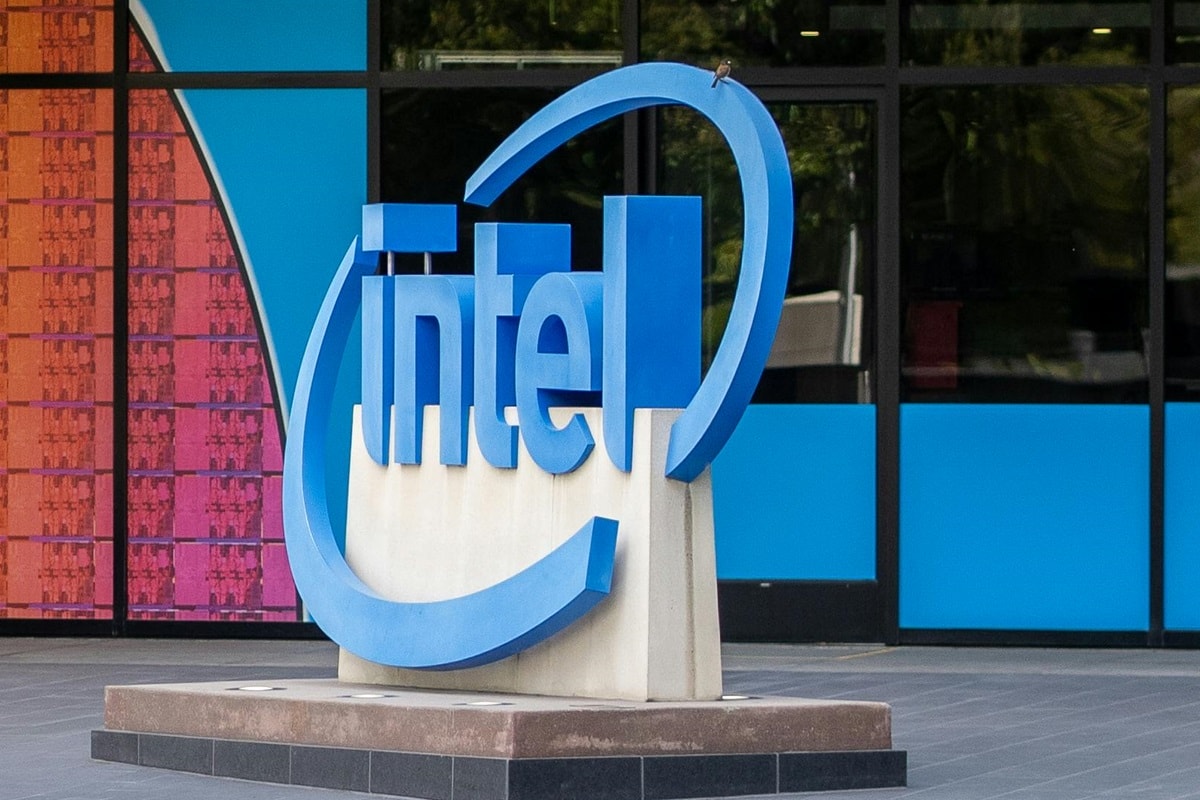Intel’s chip manufacturing business, which has recently faced significant difficulties, received an incentive for growth and development after the announcement of the beginning of interaction with a major customer, which is Amazon.

The statement about the mentioned collaboration was made last Monday, September 16. Also on the specified day, it became known that Intel will receive financial funds in the amount of up to $3 billion under the US Chips and Science Act. This money will be used for the production of microcircuits by the company for military purposes.
Intel Foundry and Amazon Web Services (AWS) plan to jointly invest in the development of a custom chip. The parties to the cooperation also announced a multi-year multibillion-dollar framework.
Intel chief executive officer Pat Gelsinger said on Monday that the company will manufacture an AI fabric chip for AWS on Intel 18A.
In the past, the mentioned firm was the undisputed leader in the area of making microcircuits. The company manufactures appropriate products for subsequent use in personal computers. Over time, Intel lost its status as the leader of the microcircuits market, although it demonstrates a desire to keep up with the so-called wave of mobile computing. Currently, in terms of market capitalization, the company is inferior to Qualcomm and Texas Instruments, which are the main players in the mobile chip sector.
At the same time, Nvidia nowadays holds a kind of supremacy in the global microcircuits manufacturing industry. This company has become one of the main beneficiaries of the so-called artificial intelligence boom. Nvidia develops graphics processing units, which are necessary for training and ensuring the process of subsequent operation of machine intelligence systems. In the summer of the current year, the company’s market capitalization indicator crossed a kind of historical mark of $3 trillion, becoming one of the most valuable brands both in the United States and globally. The prospects for Nvidia’s continued success are significant because artificial intelligence, in addition to the impressive cognitive abilities already demonstrated, has large-scale potential that has yet to be realized. Moreover, AI is perceived by some experts, including futurologists, as a kind of technological source of transformation of the world as an economic and social space, the territory of materialization of political ideologies, and the cultural environment. Besides, there are also currently circulating expectations that over time artificial intelligence will become an alternative form of mind capable of independent development. Moreover, there is an opinion that in the foreseeable future, machine intelligence will surpass the capabilities of human consciousness in terms of cognitive abilities. The proponents of the relevant point of view are, for example, Masayoshi Son and Elon Musk.
Against the background of the mentioned potential of artificial intelligence, it is logical that exponential growth demonstrates the number of artificial intelligence industry players. At the same time, chips in this case are a kind of basic component of critical importance, which is necessary for the functioning of the material infrastructure that ensures the process of existence and evolution of machine intelligence. Intel also has plans to produce microcircuits for artificial intelligence systems. This year, the company announced the corresponding chips. For example, the Gaudi 3 processor is designed for training and subsequent deployment of artificial intelligence models. Another new processor called Xeon 6 provides high performance and power efficiency when operating with high-intensity data center workloads.
The partnership between Intel and AWS can be interpreted as one of the actions within the framework of the large-scale aspiration of the company, headed by Pat Gelsinger, to restore its position and increase its competitiveness in the chip market. It’s worth noting that above mentioned financing of up to $3 billion also contributes to the achievement of relevant goals. Moreover, in March, the White House allocated $8.5 billion to Intel to implement efforts related to the production of chips. The company also received $11.5 billion in financing in the form of loans for similar purposes. Intel will spend this money on the construction of factories and research centers in Ohio, Oregon, Arizona, and New Mexico. The total amount of financing planned by the company to materialize plans for activities in the chip manufacturing industry is $100 billion.
At the same time, Intel is suspending the implementation of its production projects in Germany and Poland for about two years. Pat Gelsinger made a corresponding statement on Monday. According to him, the decisions related to projects in Poland and Germany are because the company faced a level of demand that turned out to be lower than preliminary expectations for the corresponding indicator. In the mentioned countries, Intel planned to build two mega factories for the production of chips. For the governments of Germany and Poland, the news about the suspension of projects has become categorically negative. The authorities of both countries have allocated significant investments for the construction of mega-factories and characterized the corresponding efforts as a significant impetus for the development of the national industry.
Intel is also suspending the implementation of the production project in Malaysia. At the same time, the company stated that such decisions do not apply to its initiatives in the United States.
Moreover, Intel’s official statement notes that the collaboration with AWS and the production of chips for the US armed forces are evidence of the progress that the firm is making within the world-class building foundry business.
Against the background of news about the new partnership of the company, the value of its shares showed an increase of 6% during after-hours trading.
Pat Gelsinger this year also announced Intel’s goal of reducing spending by $10 billion by 2025. Last month, it became known that as part of the efforts aimed at achieving the mentioned goal, the company plans to lay off 15,000 of its staff. Pat Gelsinger stated that Intel must align its cost structure with the new operating model and fundamentally change the way it operates.
It is worth noting that Intel has changed its business model to improve competitiveness. The company has ambitions to become a world leader in the chip manufacturing area. At the same time, these intentions are still rather a theoretical vision of the development vector, rather than a reality that is being realized or will soon begin to materialize in the practical plane. Intel is striving to become a full-fledged competitor to Taiwan Semiconductor Manufacturing Company (TSMC). It is worth noting that TSMC is currently one of the main players in the global chip-making sector.
Intel has already more than half implemented its intention to lay off 15,000 of its staff. The company is expected to announce another round of layoffs in mid-October. Intel also plans to reduce the scale of its global footprint in the real estate market by about two-thirds. The company aims to fully implement the corresponding intention by the end of the current year.
Also on Monday, Intel in a memo announced plans to transform its foundry business by forming a separate unit of the appropriate orientation, which has its own board of directors and the ability to raise outside capital. Moreover, the company stated its intention to sell part of its stake in Altera, a manufacturer of programmable logic devices.
Pat Gelsinger says that the restructuring will allow the foundry business to evaluate independent sources of financing. This business, as a matter of priority, provides for the contract production of chips for customers, which are third-party companies. It is worth noting that the relevant area of activity, despite its prospects, is still a serious problem for Intel. In each of the past two years, the company has spent about $25 billion on the corresponding segment of its business but has not yet received a return. The likelihood that restructuring will improve this state of affairs is high.









